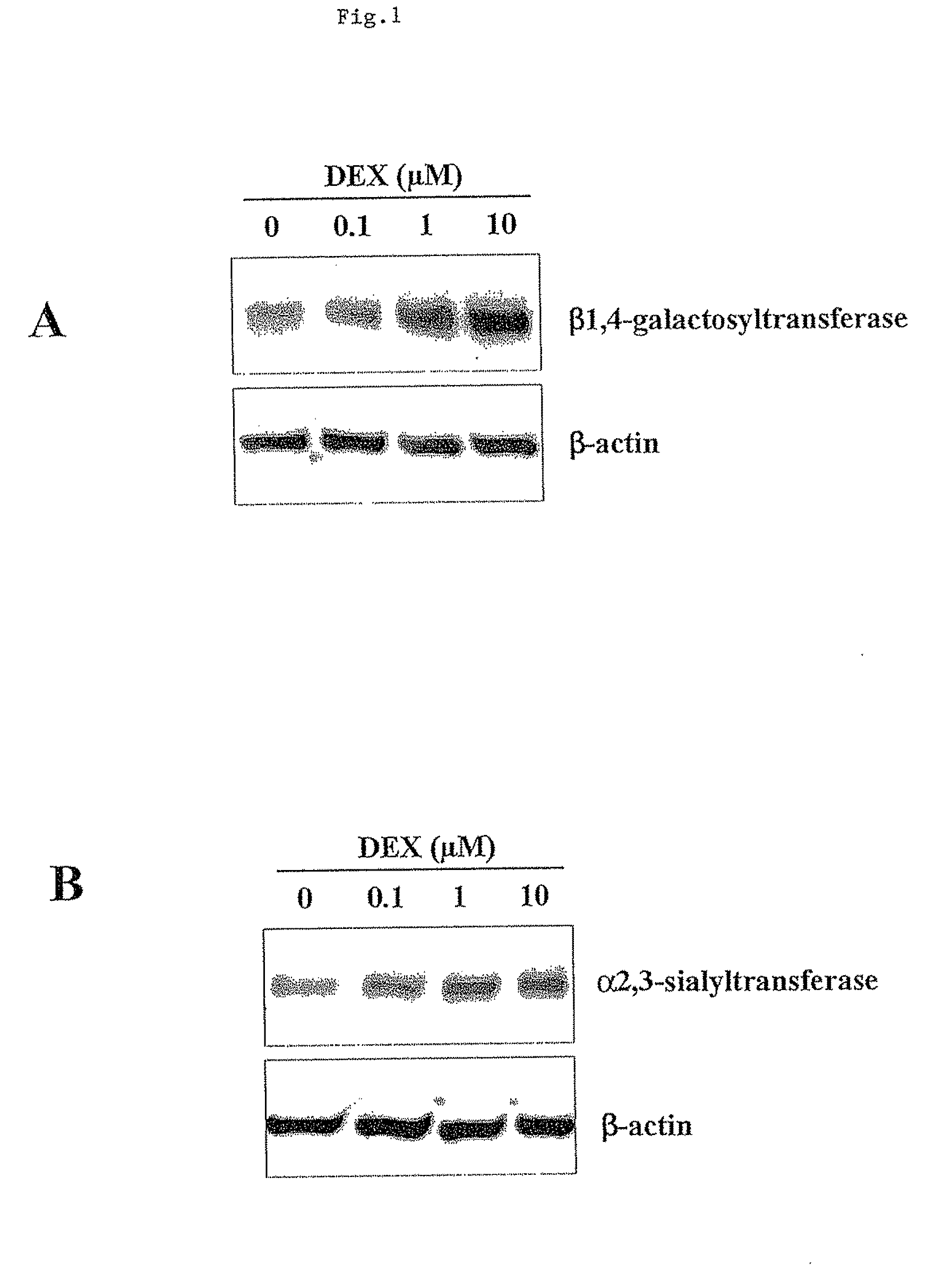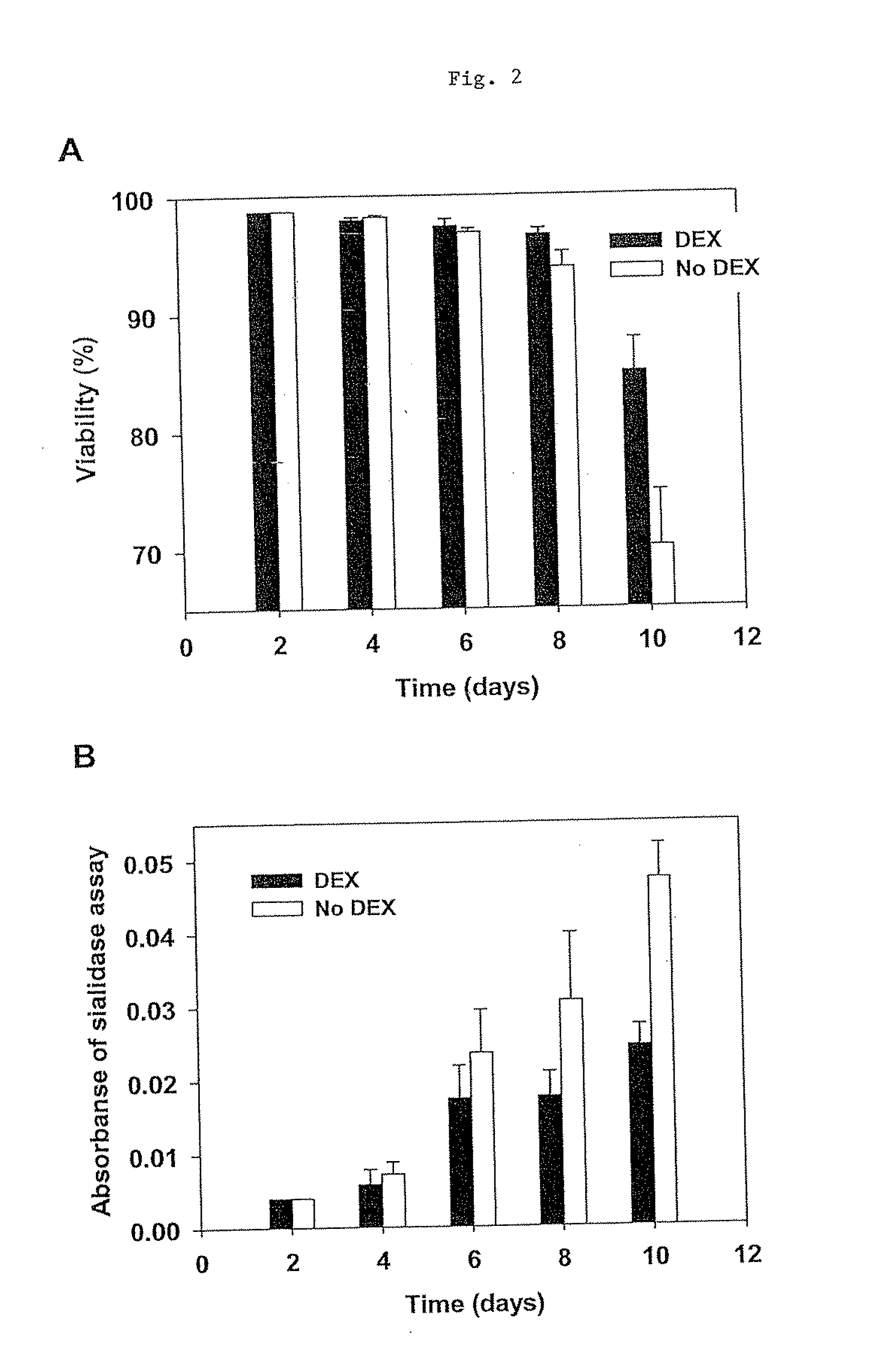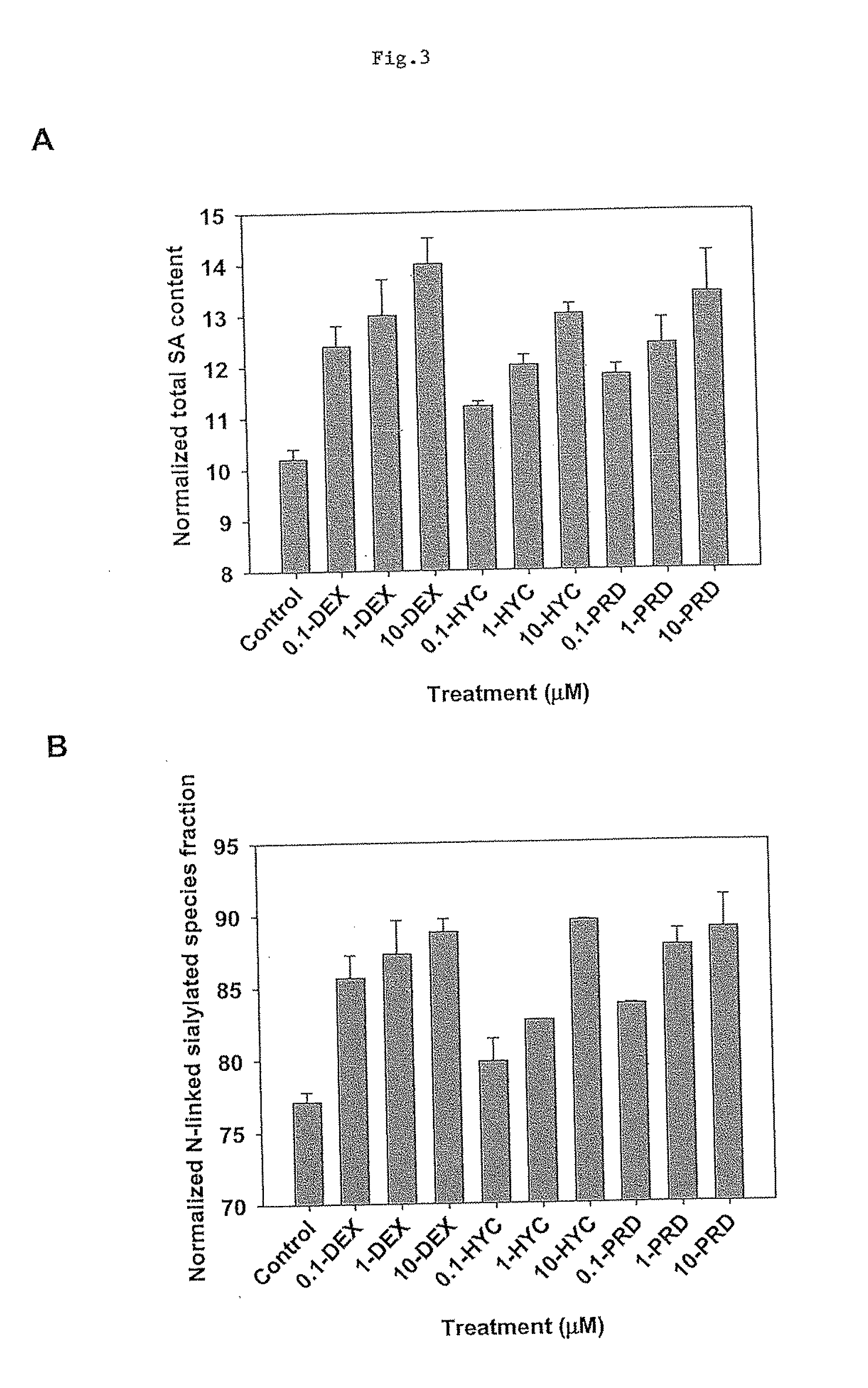Mammalian cell culture processes for protein production
a technology of mammalian cells and culture processes, which is applied in the field of mammalian cell culture processes for protein production, can solve the problems of incomplete sialylation process, affecting the immunogenicity and clearance rate of products, and the availability of cmp-sialic acid, so as to improve cell viability, cell viability, productivity and sialic acid content, and reduce protein aggregation.
- Summary
- Abstract
- Description
- Claims
- Application Information
AI Technical Summary
Benefits of technology
Problems solved by technology
Method used
Image
Examples
example 1
[0146]In this study, the intracellular effects of dexamethasone (DEX) on the CHO cell glycosylation process, and the extracellular effects due to sialidase activity were studied. Here it is demonstrated for the first time that DEX was capable of improving the sialylation of a recombinant fusion glycoprotein produced by CHO. The net effects of DEX in promoting increased sialylation tested in shake flask cultures were then successfully confirmed in controlled bioreactors, and resulted in enhanced sialic acid content as well as reduced de-sialylation rates in the fed-batch cultures.
[0147]Cell Line and Medium
[0148]The CHO cell line used in this study was originally subcloned from DG44 parental cells and cultured in a proprietary protein-free growth medium.
[0149]Shake Flask Experiments
[0150]The experiments were carried out in 250-mL shake flasks (VWR international) with starting volumes of 100 mL and initial cell densities of 6×105 cells / mL. The cultures were placed on a shaker platform ...
example 2
Cell Line and Medium
[0179]The CHO cell line used in this study was originally subcloned from DG44 parental cells and cultured in a protein-free proprietary growth medium. The host cells were genetically engineered to secrete an IgG-fusion protein under the control of CMV promoter.
[0180]Shake Flask Experiments
[0181]The experiments were carried out in 250-mL shake flasks (VWR international) with starting volumes of 100 mL and initial cell densities of 6×105 cells / mL. Shake flasks were placed on a shaker platform (VWR international) at 150 rpm rotating speed. Cells were cultured under standard humidified condition at 37° C. and 6% CO2, for a ten-day duration with daily pH adjustment using 1M sodium carbonate, and fed with glucose and glutamine every two days in order to maintain them at certain level. Cell density, cell viability and substrates / metabolites were offline-analyzed by an automated cell counting system Cedex (Innovatis AG, Bielefeld, Germany) and a Bioprofile Analyzer 400 (...
example 3
[0198]This study, for the first time, demonstrated that dexamethasone is capable of preventing CHO cell apoptosis in serum-free condition in a concentration- and time-dependent manner. DEX induces CHO cell GILZ (glucocorticoid-induced leucine zipper) gene expression. DEX was successfully used in 10-L bioreactor CHO culture to improve cell viability and Fc-fusion protein productivity and sialic acid content. This study demonstrated the application of DEX in industrial cell culture to improve recombinant protein productivity and glycosylation.
Cell Line and Medium
[0199]The CHO cell line used in this study was subcloned from DG44 parental cells and cultured in a proprietary chemically-defined growth medium.
Shake Flask Experiments
[0200]The experiments were carried out in 250-mL shake flasks (VWR international) with starting volumes of 100 mL and initial cell densities of 6×105 cells / mL. The cultures were placed on a shaker platform (VWR international) at 150 rpm and maintained at 37° C. ...
PUM
| Property | Measurement | Unit |
|---|---|---|
| volume | aaaaa | aaaaa |
| temperature | aaaaa | aaaaa |
| pH | aaaaa | aaaaa |
Abstract
Description
Claims
Application Information
 Login to View More
Login to View More - R&D
- Intellectual Property
- Life Sciences
- Materials
- Tech Scout
- Unparalleled Data Quality
- Higher Quality Content
- 60% Fewer Hallucinations
Browse by: Latest US Patents, China's latest patents, Technical Efficacy Thesaurus, Application Domain, Technology Topic, Popular Technical Reports.
© 2025 PatSnap. All rights reserved.Legal|Privacy policy|Modern Slavery Act Transparency Statement|Sitemap|About US| Contact US: help@patsnap.com



